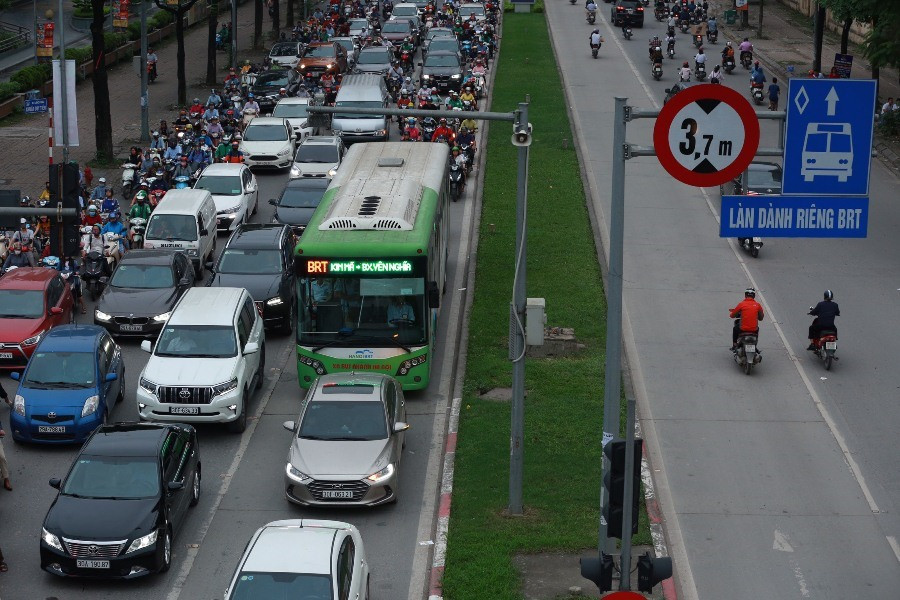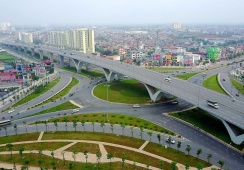
| The Giang Vo - Lang Ha road during rush hour. Photo: Tuan Khai |
The project, scheduled for implementation between 2024 and 2027, aims to upgrade seven key roads: Giang Vo, Lang Ha, Le Van Luong, To Huu, Hoang Dao Thuy, Hoang Minh Giam, and Khuat Duy Tien. These roads carry exceptionally heavy traffic and tend to get jammed during rush hours.
Among these, Giang Vo, Lang Ha, Le Van Luong, and To Huu are the BRT (Bus Rapid Transit) corridor, which serves as a major artery in the city center. The concentration of vehicles accessing and exiting the city center leads to increased traffic volumes, especially during rush hours, causing significant congestion.
Therefore, investment in improving infrastructure, re-routing traffic at critical intersections, and upgrading these roads is essential to alleviating traffic congestion, as noted in the plan.
This will encourage people to use public transportation and support economic and social development in the areas served by these roads, it said.
The planned investment includes resizing sidewalks and central reservations where feasible and optimizing traffic management at key intersections on the seven roads.
Experts suggested that one of the main issues leading to traffic congestion in Hanoi is the rapid increase in the number of private vehicles, which is growing at a rate of 4-5% per year, while the development of transportation infrastructure is only around 0.6%.
Specifically, Hanoi's population now exceeds 8 million, not including the approximately 1.2 million people who regularly live, work, and study in the city. As of October, the number of road vehicles has reached over 7.8 million, including around 1.1 million cars and about 6.8 million motorcycles. Additionally, there are about 1.2 million vehicles from other provinces and cities operating within the city.
The capital's transportation master plan through 2030, with a vision to 2050 (Plan 519, approved in March 2016), allocated VND1,300 trillion ($54 billion) for transportation infrastructure. However, only VND325 trillion ($13.5 billion), or roughly 25%, has been spent so far. The city's medium-term investment plan for 2020-2025 allocated about VND225 trillion ($9 billion) for transportation infrastructure, of which over $130 trillion ($5.4 billion), or nearly 58%, has been implemented.


